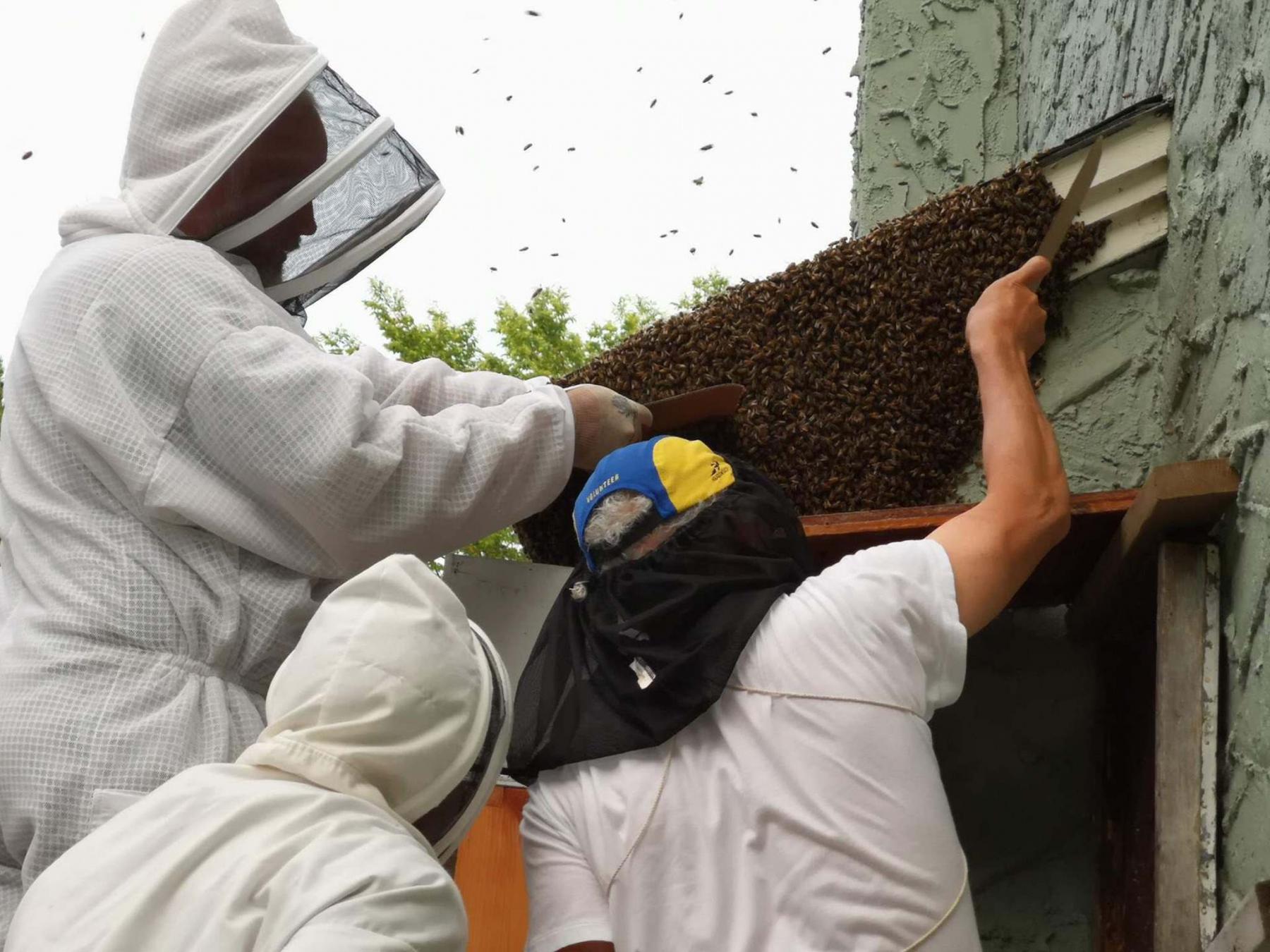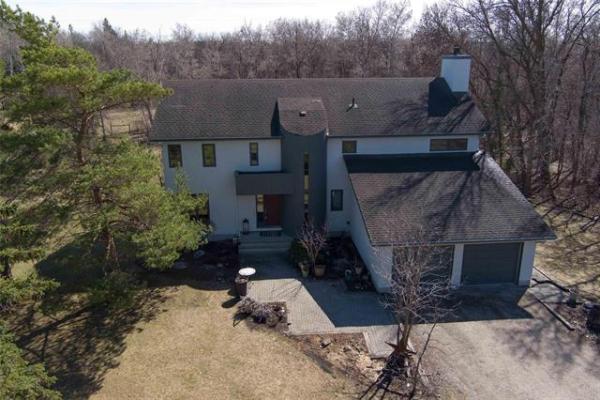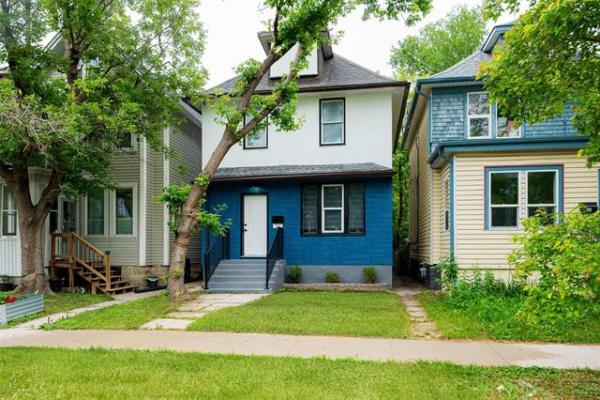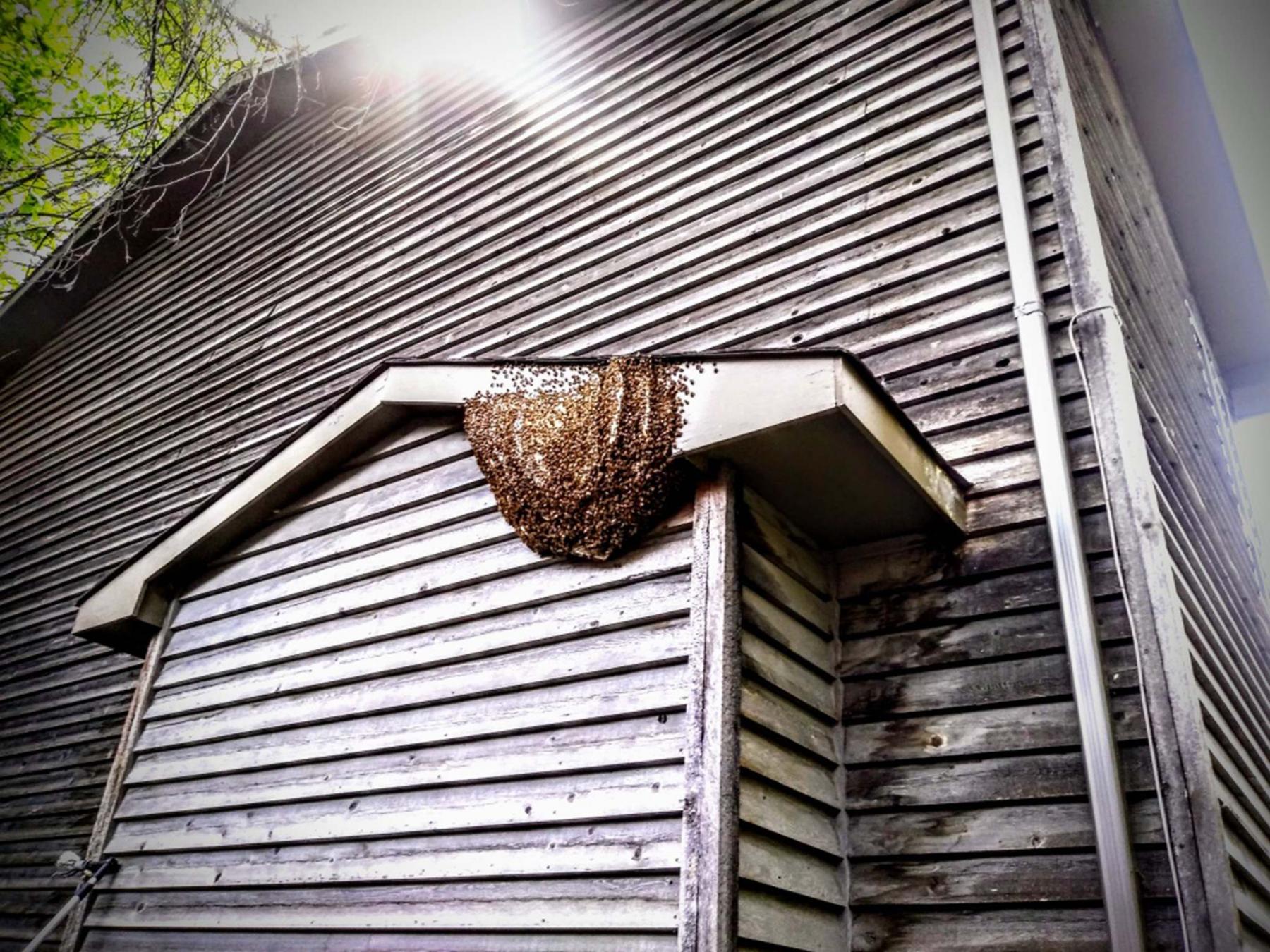
John Russell
Whoa, there are bees on your eaves. Who are you going to call? A swarm chaser.

John Russell
Success! Frames with honeycomb and a colony of bees are returned to the apiary.

Ball Horticultural
Give pollinators a chance by planting a pollinator-friendly garden. Shown: Neon Sedum.
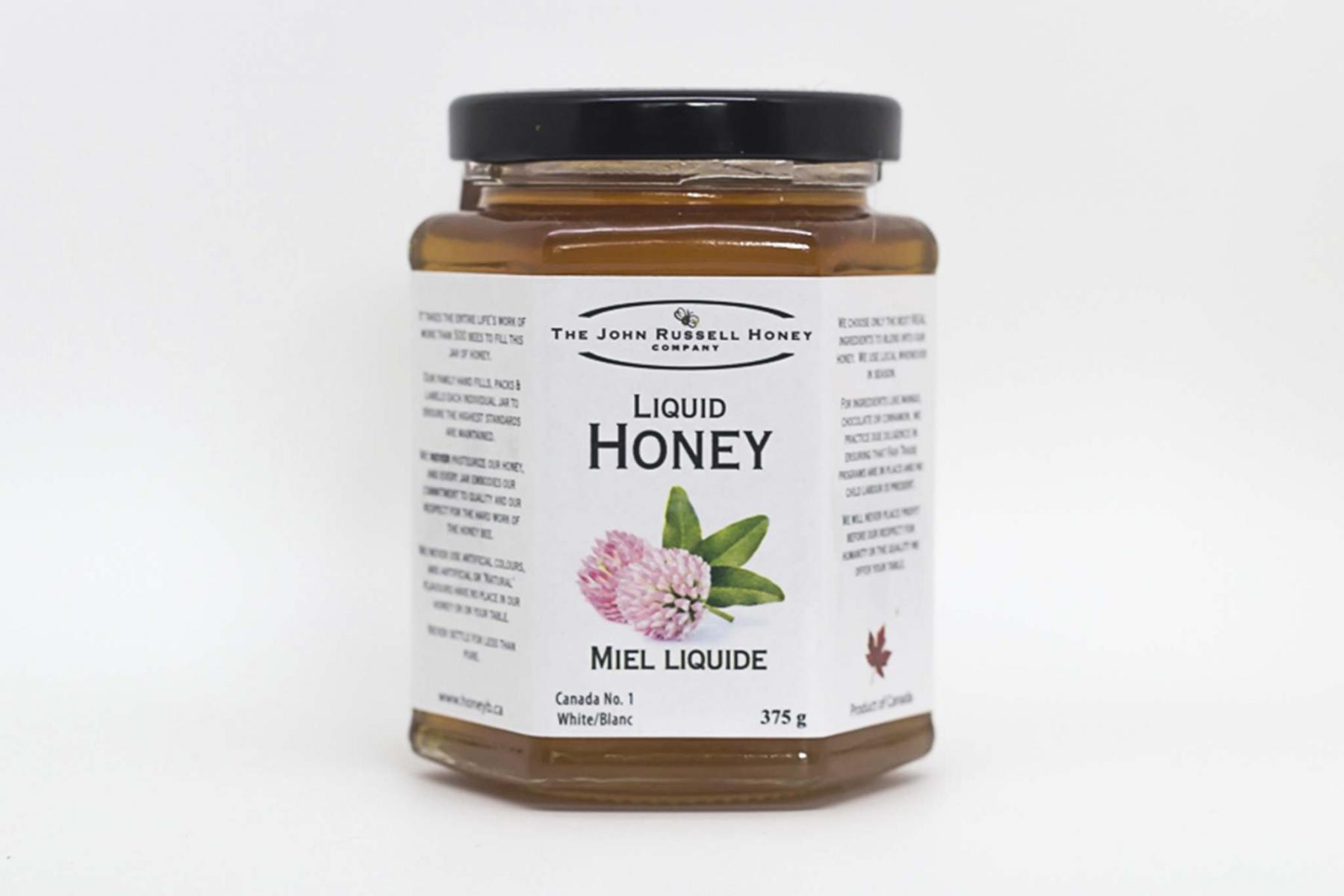
John Russell
Demand for local honey continues to grow.
John Russell is an experienced apiarist. He does all the usual things that beekeepers do, such as raising bees and collecting honey. He also chases swarms.
Russell is the president of the Red River Apiarists Association. On occasion, he receives a call from the Provincial Apiarist or the City of Winnipeg to remove a colony of bees that is attempting to relocate. In one example, a swarm of about five or six thousand bees had established itself near the eaves of a house in Tuxedo. The bees had already built honeycomb for the queen bee to lay her eggs.
Russell has a trained crew to assist in trapping swarms. Dressed in full bee suits, they puffed smoke at the bees using a device called a bee smoker which uses burning pine cones, dry grass or wood chips as fuel. When bees are exposed to a forest or grass fire, Russell says, they instinctively gorge themselves on honey in order to take as many resources with them in case it becomes necessary to abscond. The smoker that bee catchers use stimulates the bees’ survival response, he says, so that while they are busy taking up as much honey as they can, beekeepers can manipulate the frames of the honeybee colonies with minimal chance of being stung.
Next, they cut the comb from the eaves using a hooked blade, transplanted it into frames and removed the colony. They do this very carefully and very gently. "We try to damage the colony as little as possible," says Russell.
"The honeycomb is mounted and secured in frames with rubber bands and put into a standard hive body or brood chamber," Russell says. The bees are then moved to an apiary.
What causes bees to swarm? When a honeybee colony grows so quickly that there is no longer enough room for the queen bee to continue laying her eggs, Russell says, it can trigger a swarming instinct or swarming behaviour. The worker bees stop feeding the queen bee so that she slims down and is better able to fly. A percentage of bees remain in the original colony with a new queen bee while the majority of bees, after taking up as much honey as they possibly can, leave the colony with the old queen bee.
Typically, Russell says, bees are more likely to swarm between 12:30 and 2:30 p.m. The ball of bees landS somewhere nearby for a short period of time — about 24 hours — until scout bees find a new location for them to set up a more permanent home.
"Beekeepers are inventive and adaptive by necessity," Russell says. If a beekeeper is unable to retrieve a swarm, the loss is counted in both bees and honey production. If they succeed in recovering the bees, they will have two colonies instead of just one.
There are many ways to trap a swarm, Russell says. No one situation is like another.
If bees land on a tree branch, it’s as simple as cutting the branch, carrying it away and then giving it a sharp rap to knock the giant ball of bees into an awaiting colony.
When bees alighted onto the side of a brick wall in St. Norbert, Russell and his team built a scaffold, placed an empty box beneath the swarm, and gently moved the bees into the box. This type of intervention is extremely important because it ensures that the bees do not have to be destroyed.
"We must think before we exterminate," Russell says.
"It’s important that we give our pollinators the best possible chance for survival by planting pollinator-friendly species.
"We all have to exist within the environment and need to think beyond our own comfort and convenience before we spray with chemicals. Everything we do has an impact."
The demand for fresh local honey is very strong. Russell says urban honey offers a delicious mélange of flavours because of the diversity of flowering plants and trees that grow along river banks and creeks and throughout urban neighbourhoods.
Of course, rural beekeepers would argue that their honey has exceptional taste, too.
The Gimli Environmental Advisory Committee (GEAC) maintains a beehive at the Community Gardens on North Colonization Road. The gardens include 30 in-ground plots and numerous raised beds.
When I visited in June, Audrey Swift and Cam Bellingham gave me a tour of the gardens. Both spoke enthusiastically about the boost in the productivity of the nearby vegetable gardens as a result of the close proximity of the hives.
They extracted honey twice, once in July and again in August. Bellingham says he is overwhelmed this year by the amount of honey — 182 kilograms — that just one hive produced. Jars of honey will be available for sale at the Gimli Rec Centre’s fall craft sale on Sept. 21st.
In late October or early November, the hive will be completely wrapped with insulation to protect it for the winter.
Interestingly, Dr. Robert Currie, head of the department of entomology at the University of Manitoba, says that Canadian beekeepers have not always overwintered their bees.
During the 1970s, for example, it was not uncommon for bee colonies to be killed in the fall as an alternative to overwintering.
In spring, packaged bees were imported from the U.S., but with the arrival of parasites and pathogens that threatened bee populations, packaged bees could no longer be shipped. Today, Currie says, everyone overwinters their bees unless there is a reason that a colony may not be able to survive the winter.
Currie’s research includes breeding bees that are more resistant to diseases and pathogens. Increased disease resistance would greatly reduce the need for antibiotics and parasites to control the pests that are found within the beehives, Currie says.
"We are looking for more sustainable solutions," he says.
"We are trying to develop molecular markers that are going to allow us to more effectively breed bees that are resistant to diseases and pathogens."
It is a labour-intensive process. Currie’s work has contributed to research on queen bees, overwintering, pathogens and other colony stressors.
Beekeeping for the Hobbyist is a non-credit course offered by the department of entomology at the U of M in collaboration with Manitoba Agriculture. This year marks the 97th consecutive year that the course has been offered.
Currie is one of the instructors along with Rhéal Lafrenière, provincial apiarist.
Currie says registration has grown considerably since he began teaching the course in 1991. At that time, there was an average of 25 to 30 students. Today, the number of students ranges from 105 to 120.
The course runs from January to March one evening a week. Registration is now open. Students receive free membership in the Red River Apiarists Association for one year.
Russell says membership provides networking opportunities as well as access to equipment and resources. There is also the opportunity for mentorship and practical experience.
If you are interested in learning more about urban beekeeping, start by familiarizing yourself with the City of Winnipeg guidelines and the Manitoba Bee Act.
colleenizacharias@gmail.com

